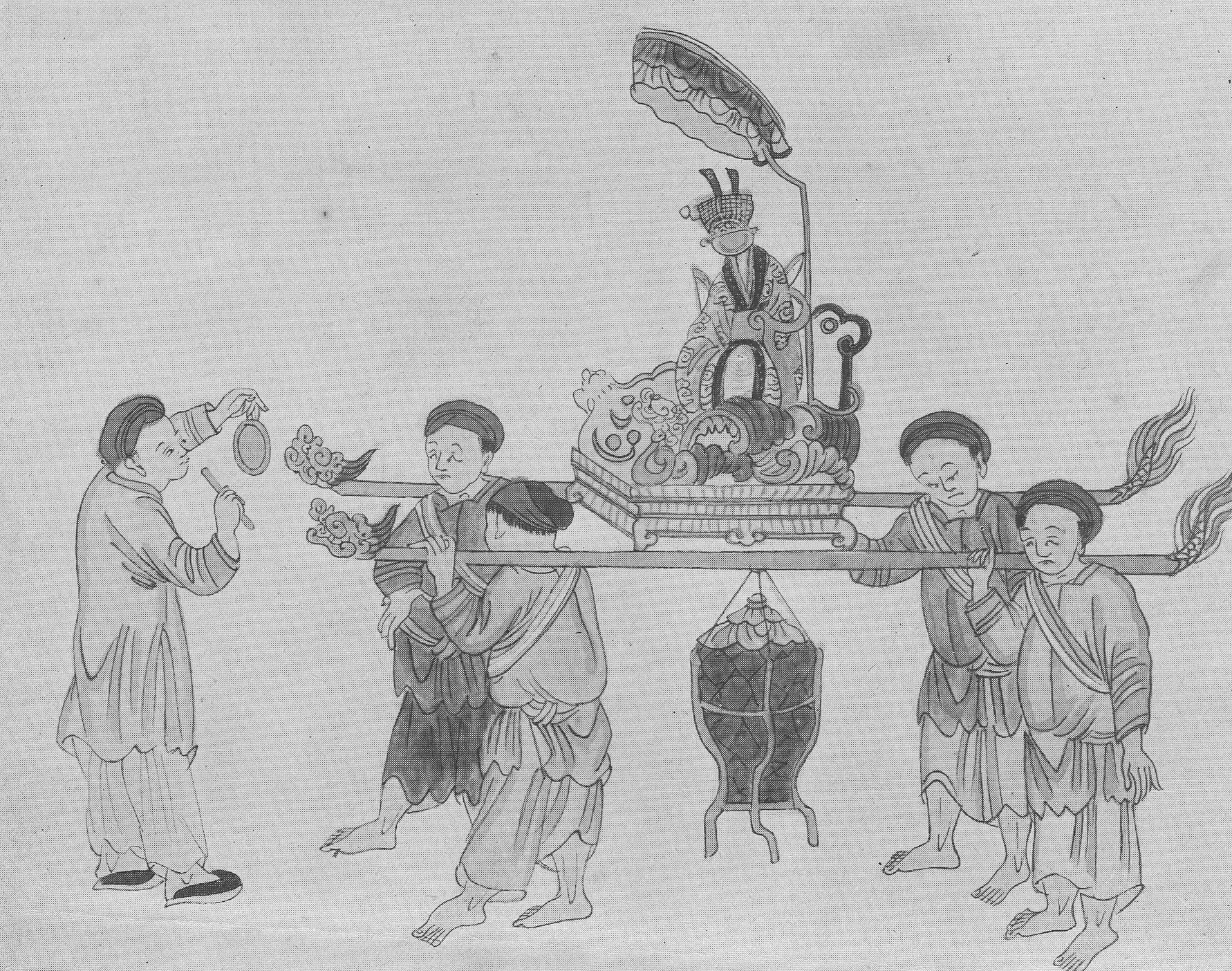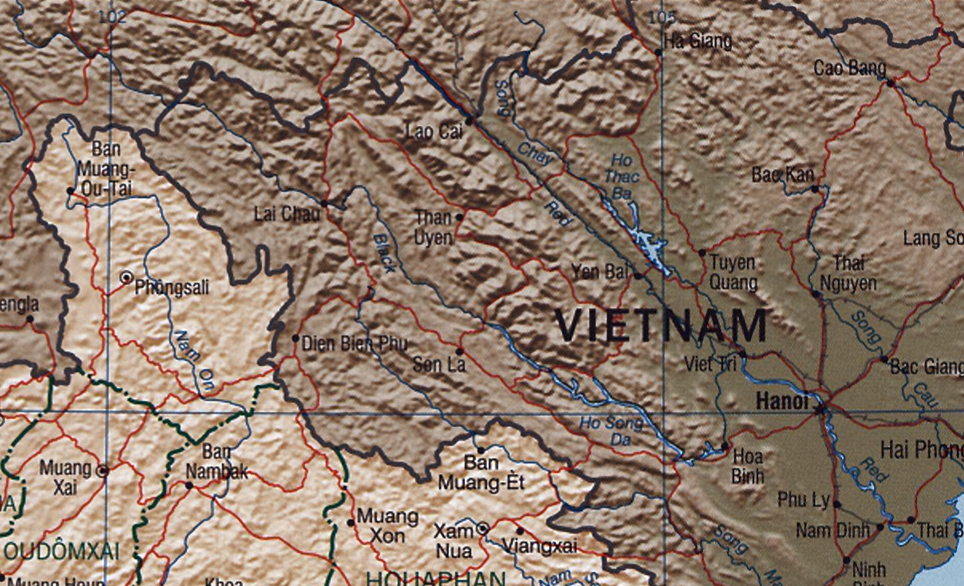|
Cây Nêu
Cây nêu (chữ Nôm: 核標), is a New Year tree in Vietnamese culture, made from bamboo stalk, which has the effect of warding off evil spirits during the Tết Nguyên Đán, or Vietnamese New Year. The Viet people set up the cây nêu on the 23rd day of the 12th lunar month, to prevent the devil from coming to disturb the homeowner during the days when Ông Công - Ông Táo returned to heaven. Some other ethnic groups such as Tày and Nùng in the northern mountainous areas such as Hà Giang, Tuyên Quang, Cao Bằng, Lạng Sơn, Bắc Kạn, Lào Cai, Yên Bái again plant this cây nêu on the afternoon of the 30rd day of the 12th lunar month. Hmong people build the cây nêu in the Gầu Tào festival from the 3rd to the 5th day of the first lunar month, the 7th day of the first lunar month is the summer day, the San Diu people build the cây nêu in the Cầu Mùa Festival. Viet people usually cut down a cây nêu on the 7th day of the 1st lunar month, called ''L ... [...More Info...] [...Related Items...] OR: [Wikipedia] [Google] [Baidu] |
Tuyên Quang Province
Tuyên Quang () is a province of Vietnam, located in the northeastern part of the country to the northwest of Hanoi, at the centre of Lô River valley, a tributary of the Red River. Its capital is Tuyên Quang. The province had a population of 805,780 in 2022, with a density of 137 persons per km2 over a total land area of . Tuyên Quang borders Hà Giang to the north, Cao Bằng to the northeast, Bắc Kạn and Thái Nguyên to the east, Vĩnh Phúc to the south, Phú Thọ to the southwest, and Yên Bái to the west. History Tuyên Quang, the capital city of the province has a rich history of the battles fought in the region. The earliest history is to the First Indochina War when it served as a garrison. During this war the Viet Minh made the Legionnaires surrender at the memorial to the Battle of Tuyên Quang. Another historical event is the Siege of Tuyên Quang, commemorated in the first verse of '' Le Boudin'', its principal marching song. The French garrison ... [...More Info...] [...Related Items...] OR: [Wikipedia] [Google] [Baidu] |
Vietnamese Folk Religion
Vietnamese folk religion () or Đạo Lương (道良) is a group of spiritual beliefs and practices adhered to by the Vietnamese people. About 86% of the population in Vietnam are reported irreligion, irreligious, but are associated with this tradition. Vietnamese folk religion is not an Organized religion, organized religious system, but a set of local worship traditions devoted to the "thần", a term which can be translated as "spirits", "gods" or with the more exhaustive locution "generative powers". These gods can be List of nature deities, nature deities or national god, national, community or kinship tutelary deity, tutelary deities or ancestral gods and the veneration of the dead, ancestral gods of a specific family. Ancestral gods are often deified heroic persons. Vietnamese mythology preserves narratives telling of the actions of many of the cosmic gods and cultural heroes. is a distinct form of Vietnamese shamanism, giving prominence to some mother goddesses into it ... [...More Info...] [...Related Items...] OR: [Wikipedia] [Google] [Baidu] |
Kadomatsu
are traditional Japanese decorations made for the Japanese New Year, New Year. They are a type of ''yorishiro'', or objects intended to welcome ancestral spirits or ''kami'' of the harvest. ''Kadomatsu'' are usually placed in pairs in front of homes and buildings. Construction and placement Historically, ''kadomatsu'' was often made with pine wood, but these days bamboo is more common. The central portion of the ''kadomatsu'' is formed from three large bamboos, though plastic ''kadomatsu'' are available. After binding all the elements of the ''kadomatsu'', it is bound with a straw mat and newly woven straw rope. ''Kadomatsu'' are placed in pairs on either side of the gate, representing male and female. Usage In modern times, ''kadomatsu'' are placed after Christmas until January 7 (or January 15 during the Edo period) and are considered temporary housing (''shintai'') for ''kami''. Designs for ''kadomatsu'' vary depending on region but are typically made of pine, bamboo, a ... [...More Info...] [...Related Items...] OR: [Wikipedia] [Google] [Baidu] |
San Diu People
The Sán Dìu (also known as San Deo, Trai, Trai Dat and Man Quan Coc; ; Chữ nôm: ; Vietnamese alphabet: Người Sán Dìu) are a Yao ethnic group in northern Vietnam who speak Yue Chinese (Cantonese), a Sinitic language. They are believed to have migrated from Guangdong, China around 1600. The group's estimated population as of 2000 was 117,500; the 2019 census put the number at 183,004. They speak a variant of Cantonese, and it is suggested that some still speak Iu Mien. The major religions are Mahayana Buddhism and Taoism, with elements of animism and veneration of the dead. About 400 are adherents of the Catholic Church; a few are evangelical Protestants. This ethnic group is mainly concentrated around the Tam Đảo range in Thái Nguyên Province. See also * List of ethnic groups in Vietnam * Hoa people * Ngái people The Ngái (; Chữ Nôm: ) are a Hakka-speaking community in Vietnam and other nearby countries of Indochina, whose ancestors were Southern Chi ... [...More Info...] [...Related Items...] OR: [Wikipedia] [Google] [Baidu] |
Hmong People
The Hmong people ( RPA: , CHV: ''Hmôngz'', Nyiakeng Puachue: , Pahawh Hmong: , , zh, c=苗族蒙人) are an indigenous group in East Asia and Southeast Asia. In China, the Hmong people are classified as a sub-group of the Miao people. The modern Hmong reside mainly in Southwestern China and Mainland Southeast Asian countries such as Vietnam, Laos, Thailand, and Myanmar. There are also diaspora communities in the United States, Australia, France, and South America. Etymology The term ''Hmong'' is the English pronunciation of the Hmong's native name. It is a singular and plural noun (e.g., Japanese, French, etc.). Very little is known about the native Hmong name as it is not mentioned in Chinese historical records, since the Han identified the Hmong as Miao. The meaning of it is debatable and no one is sure of its origin, although it can be traced back to several provinces in China. However, Hmong Americans and Hmong Laotians often associate it with "Free" and/or "Hmoov ... [...More Info...] [...Related Items...] OR: [Wikipedia] [Google] [Baidu] |
Yên Bái Province
Yên Bái was a former Provinces of Vietnam, province located in Northwest (Vietnam), Northwest Vietnam. It shares borders with six provinces which are Hà Giang province, Lào Cai province, Lai Châu province, Sơn La province, Phú Thọ province, and Tuyên Quang province. The province covers an area of about and as of 2022 it had a population of 847,250 people. Yên Bái's history is important under the French Indochina, French colony, particularly the subsequent "Yên Bái mutiny", an uprising of Vietnamese soldiers in the French colonial army on 10 February 1930 in collaboration with civilian supporters who were members of the Việt Nam Quốc Dân Đảng (VNQDD, the Vietnamese Nationalist Party). Forestry and farming are the main economic stays of the province. Thác Bà Lake is a natural asset of the country along with its Thác Bà Hydroelectric Plant. Dong Cuong Festival is an important festival of the province. On June 12th, 2025, Yên Bái province is merged with L ... [...More Info...] [...Related Items...] OR: [Wikipedia] [Google] [Baidu] |



